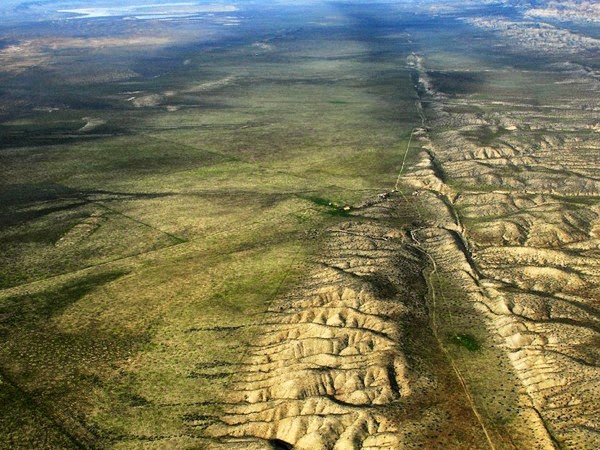
In the days leading up to some recent moderate-sized earthquakes, instruments nearby have picked up brief low-frequency pulses in Earth’s magnetic field. A few scientists have proposed that such pulses, which seemed to become stronger and more frequent just before the earthquakes occurred, could serve as an early warning sign for impending seismic activity. Now, a team has come up with a model for how these magnetic pulses might be generated, though some critics say they may have a humanmade origin.
Brief fluctuations in Earth’s magnetic field have been detected before many earthquakes in the past 50 years, says Friedemann Freund, a crystallographer at San Jose State University in California. For example, in the weeks before a magnitude-5.4 quake struck about 15 kilometers northeast of San Jose in October 2007, an instrument near the epicenter sensed a number of unusual magnetic pulses, presumably emanating from deep in the Earth. (The largest of them measured 30 nanoteslas, which is about 1/100,000th the typical strength of the planet’s magnetic field measured at Earth’s surface.) Those blips became more frequent as the day of the earthquake approached, Freund says. More recently, prior to several medium- to moderate-sized quakes in Peru, two sensitive magnetometers recorded the same sort of pulses.
One big puzzle, Freund notes, has been how such pulses could be generated. Now, he and his colleagues suggest that these blips stem from microscopic changes in crystals in rocks under seismic stress deep within Earth. In many types of rocks, particularly volcanic rocks that have substantial amounts of water locked inside them, crystals are chock-full of oxygen-oxygen bonds called peroxy bonds. (These bonds formed long ago, after chemical changes split some of the water molecules, freeing the hydrogen atoms to bond together and then diffuse out of the rocks as gas.) When those rocks are squeezed, say, by the sides of a fault zone scraping past one another, some of the peroxy bonds break. Those broken bonds release negatively charged electrons, which remain trapped in place, and create positively charged “holes” in the crystal, Freund explains. In lab experiments, the electrical disturbances associated with those holes diffuse through the surrounding rocks at speeds of about 100 meters per second.
Freund and his team propose that the same process might be happening within Earth’s crust. As stress on large volumes of rock builds in advance of an impending quake, many, many of these electrical holes are created inside them. It’s the mass migration of such holes that creates the large electrical currents responsible for generating the low-frequency magnetic pulses that make their way to detectors on Earth’s surface, they say.
For the Peruvian quakes, most of the pulses sensed by the magnetometers ranged between one-sixth and one-quarter of a second long. But some lasted up to 2 seconds, Freund says—a length that strongly suggests that the pulses weren’t triggered by lightning, either nearby or far away, which some critics of his model have proposed as an alternative explanation. More importantly, he notes, with data from the two sensors in Peru he and his colleagues were able to pinpoint the strongest of those pulses as originating within a few kilometers of the epicenters of subsequent quakes, they report in a paper posted to the arXiv preprint server. For now, Freund admits, the team’s model is preliminary: The paper has been submitted to a journal and is now being reviewed by other scientists.
“This paper only makes sense if the observations [of magnetic pulses] are good,” says John Ebel, a seismologist at Boston College, who wasn’t involved in the research. He points out that two instruments aren’t sufficient to pinpoint the location of an event; to truly “triangulate” an event you need at least three sensors.
But another aspect of the team’s findings is even more worrying, he notes: “I’m concerned that the pulses are not originating deep within the Earth.” It’s possible, he continues, that the blips may have some inexplicable humanmade origin. Decades ago, Ebel notes, his Boston-based magnetometers started picking up a series of odd pulses every morning. Eventually, he and his colleagues identified the sources of those gremlins: It was the engineers cranking up Boston’s trolley cars at a rail yard a few kilometers away from the instruments.
Even if the magnetic pulses originate within Earth along seismic zones under stress, Freund says, the blips don’t always foretell a quake. It’s more likely to be the pattern of pulses—and, in particular, changes in their size and frequency—that Freund and his colleagues say might offer scientists a crystal ball for impending temblors.
Note : The above story is based on materials provided by Sid Perkins ” sciencemag “










